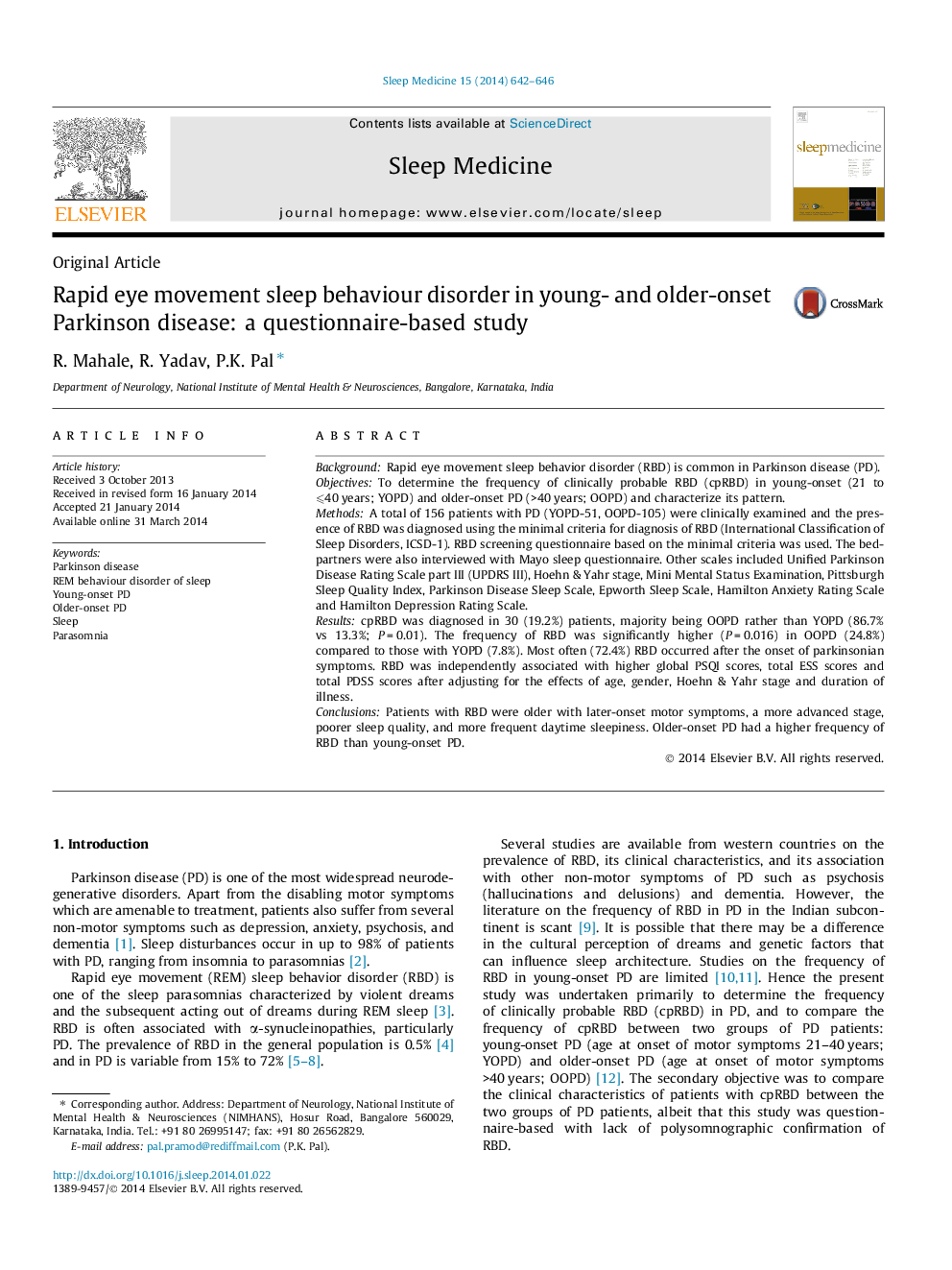| Article ID | Journal | Published Year | Pages | File Type |
|---|---|---|---|---|
| 3176117 | Sleep Medicine | 2014 | 5 Pages |
•Rapid eye movement sleep behavior disorder (RBD) is common in Parkinson’s disease.•Prevalence of RBD in young and older onset PD may differ.•51 young onset and 105 older onset PD were evaluated for clinically probable RBD.•Prevalence of RBD was higher in older compared to younger onset PD (24.8% vs 7.8%).
BackgroundRapid eye movement sleep behavior disorder (RBD) is common in Parkinson disease (PD).ObjectivesTo determine the frequency of clinically probable RBD (cpRBD) in young-onset (21 to ⩽40 years; YOPD) and older-onset PD (>40 years; OOPD) and characterize its pattern.MethodsA total of 156 patients with PD (YOPD-51, OOPD-105) were clinically examined and the presence of RBD was diagnosed using the minimal criteria for diagnosis of RBD (International Classification of Sleep Disorders, ICSD-1). RBD screening questionnaire based on the minimal criteria was used. The bed-partners were also interviewed with Mayo sleep questionnaire. Other scales included Unified Parkinson Disease Rating Scale part III (UPDRS III), Hoehn & Yahr stage, Mini Mental Status Examination, Pittsburgh Sleep Quality Index, Parkinson Disease Sleep Scale, Epworth Sleep Scale, Hamilton Anxiety Rating Scale and Hamilton Depression Rating Scale.ResultscpRBD was diagnosed in 30 (19.2%) patients, majority being OOPD rather than YOPD (86.7% vs 13.3%; P = 0.01). The frequency of RBD was significantly higher (P = 0.016) in OOPD (24.8%) compared to those with YOPD (7.8%). Most often (72.4%) RBD occurred after the onset of parkinsonian symptoms. RBD was independently associated with higher global PSQI scores, total ESS scores and total PDSS scores after adjusting for the effects of age, gender, Hoehn & Yahr stage and duration of illness.ConclusionsPatients with RBD were older with later-onset motor symptoms, a more advanced stage, poorer sleep quality, and more frequent daytime sleepiness. Older-onset PD had a higher frequency of RBD than young-onset PD.
